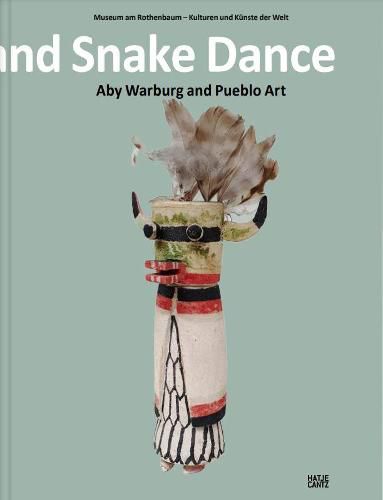Readings Newsletter
Become a Readings Member to make your shopping experience even easier.
Sign in or sign up for free!
You’re not far away from qualifying for FREE standard shipping within Australia
You’ve qualified for FREE standard shipping within Australia
The cart is loading…






The legacy of the art and cultural scientist Aby Warburg offers many subjects for reassessment. Almost unknown until now are the artifacts he collected on a journey through the southwest of the US in 1895/96 and donated to the Museum fur Voelkerkunde in Hamburg (today Museum am Rothenbaum). The results first unfolded in Warburg’s famous lecture on the snake ritual of the Hopi (1923). Following Warburg’s transdisciplinary approach, this publication examines his guiding principles in assembling his collection as well as his reading of Pueblo art and culture. It pays tribute to the works and their artistic significance and sheds light on the circumstances of acquisition in the sociopolitical environment of the Pueblo communities of the time. The contemporary fascination with the snake ritual is also a topic. Set against this are the previously neglected perspectives and strategies of Pueblo leaders to regain interpretive sovereignty over culturally sensitive content and imagery.
$9.00 standard shipping within Australia
FREE standard shipping within Australia for orders over $100.00
Express & International shipping calculated at checkout
The legacy of the art and cultural scientist Aby Warburg offers many subjects for reassessment. Almost unknown until now are the artifacts he collected on a journey through the southwest of the US in 1895/96 and donated to the Museum fur Voelkerkunde in Hamburg (today Museum am Rothenbaum). The results first unfolded in Warburg’s famous lecture on the snake ritual of the Hopi (1923). Following Warburg’s transdisciplinary approach, this publication examines his guiding principles in assembling his collection as well as his reading of Pueblo art and culture. It pays tribute to the works and their artistic significance and sheds light on the circumstances of acquisition in the sociopolitical environment of the Pueblo communities of the time. The contemporary fascination with the snake ritual is also a topic. Set against this are the previously neglected perspectives and strategies of Pueblo leaders to regain interpretive sovereignty over culturally sensitive content and imagery.